 The usual story begins sometime in the late ’70s. Cue violins. “The rise of neoliberalism — as personified by Ronald Reagan and Margaret Thatcher — signalled the beginning of the end for trade unionism. Since then, unions have experienced rapid and relentless decline…” Right? As a despairing friend put it, a while back: “Unions have spent the last forty years trying to turn a rout into a retreat”.
The usual story begins sometime in the late ’70s. Cue violins. “The rise of neoliberalism — as personified by Ronald Reagan and Margaret Thatcher — signalled the beginning of the end for trade unionism. Since then, unions have experienced rapid and relentless decline…” Right? As a despairing friend put it, a while back: “Unions have spent the last forty years trying to turn a rout into a retreat”.
The trouble with this dominant narrative is that, according to the best data we have available, it is wrong. For most countries, at least. In this paper Peter Hall-Jones looks at how our perspective has been skewed by the experience of a relatively small number of post-industrial nations. The real story is far more interesting. It also suggests a positive way forward. Rather than running trade unions as ailing small businesses, we should be building cooperation along supply chains.
Before we go any further, let’s go back to that dominant narrative. The way it is framed suggests where it has comes from. After all, the 1970s and 1980s were a veritable chaos of competing plots. This was the era of Mikhail Gorbachev, who personified an apparently positive new direction for the twenty one “Marxist Leninist” nations. Then there were the liberation struggles, personified by such wonderful characters such as Nelson Mandela, Subcomandante “Marcos”, Aung San Suu Kyi and many, many others. On top of this, no less than 120 countries declared themselves to be “non-aligned”. And China seemed to be heading in several directions at once. The closer you look, the more chaotic the story becomes. To speak of any coherent international narrative for unionism from the 1970s to the 1990s is a nonsense. This was a period during which some countries industrialised, while others saw an end to state centralism. Some decolonised, others democratised. Some saw a shift towards the services sector, others poured wealth into labor-intensive free trade zones. In general, there was huge growth in female employment. However some countries saw their working class decimated altogether by dictatorship, Cold War position-plays and civil wars. And, of course, many countries just maintained their time-honoured agricultural base, centred around small holdings and peasant labour. This shambolic era created all kinds of shifts in union membership, both positive and negative.
The simplistic tale of union decline, which purports to have its roots in this jumble, arises from the overly-generalised experience of a subset of wealthy nations.
When it comes to mapping trends in global unionism, then, there is no good reason to start counting from the late 1970s or early 1980s. Rather, if we are looking for a coherent storyline, we need to wait for almost a generation. During this time neoliberalism effectively swept the board. By the late 1990s state centralism had imploded; Asia’s “tiger economies” had weathered their first crisis; national liberation movements had triumphed (in the main); and transnational corporations had taken control of over one quarter of the world’s productive assets. The Internet and mobile phones had connected a billion people; tariff systems were largely dismantled; capital was financialized; conditional loans had brought dissenting nations into line; and multilateral trade arrangements were truly in vogue. For the first time ever, we can meaningfully speak of “we”.
For this reason (among others) I suggest we ignore Francis Fukuyama’s declaration of “the end of history”. In fact the polar opposite is closer to the truth. Social justice activists captured this moment better when they went beyond protests against globalisation and started to advance the slogan: “Another world is possible”. What I would suggest, if we want to look for trends in international unionism, is that we consider counting from about 2000 onwards.
Finding the plot
There is an immediate problem. The ILO’s last major study of global unionism was published in 1997. Since then, analysts have had to collect data from a huge range of disparate sources, many of which use different measures in their calculations. Worse, there has been an academic shift towards simplistic “membership density” figures. These effectively mask both membership numbers and fluctuations in the labour force. It is rather like telling the punchline without bothering with the rest of the joke.
In 2007 volunteers from the New Unionism Network[ii] began to “crowd source” an interim reassessment of the movement. Volunteers collected data from as many sources as possible. This included excellent sets from the ILO and OECD, as well as the incomparable work of Jelle Visser at the Amsterdam Institute for Advanced Labour Studies. There were also many good studies from GURN, FES, the LO/FTF Council, the US Solidarity Centre, EIRO and Eurofound. On top of this there were ITUC/ICFTU reports to the WTO, independent academic works, government reports and media analyses. Taking all these together, our database was soon capable of tentatively assessing changes in coverage for the majority of the world’s organised workforce. By tracking raw numbers (rather than composite density figures) we also avoided many of the methodological traps. A rather surprising story began to emerge. After five more years we have enough data to confirm these first findings. In fact, our conclusions have been corroborated every time a major new data set has become available.
To cut a long story short, we currently have comparable data points relating to union membership between 2000 and 2013 for 94 countries. Table One presents the results, as at November 2013.
UNION MEMBERSHIP POST 2000: 94 COUNTRIES
This came as a real surprise. We decided to categorise the sources, according to how sure were we of their data. We divided them into three categories, with only a very few sources classified as data we could treat with a high level of confidence. An explanation of this is available at http://www.newunionism.net/unions.htm, along with the specific national figures we used and links to the data sources.
UNION MEMBERSHIP: 62 COUNTRIES, HIGH CERTAINTY
Table Two above presents the data we have for this second group. It includes the 62 nations for which we have very reliable data, which is also directly comparable.[iii] Take a careful look. (You can find links to sources and many more recent figures at http://unionwiki.net). The dominant narrative of decline was clearly on shaky ground.
The plot thickens
Although the conclusion from these two sets of numbers is broadly the same, there is also a clear difference between Tables One and Two. How might we explain this? Almost by definition, the nations for which we had the best information were those with the most wealth. Because of this, the list of nations in Table Two contains a higher proportion of rich countries. Perhaps unions in these countries were more likely to be in decline? In order to test this hypotheseis we compared the data we had for the 34 OECD member states (Table Three) with the data we had for the world’s 34 poorest countries (Table Four)[iv]. Again, important differences emerged.
Above: UNION MEMBERSHIP IN THE 34 OECD NATIONS
Above: UNION MEMBERSHIP IN THE 34 POOREST NATIONS
When it comes to the 34 OECD nations, we have all the data we need. Here, it seems that the majority of countries are experiencing union decline. (That said, perhaps even here the picture is not as bleak as we are geerally led to believe?). However, when it comes to the world’s 34 poorest countries, we have a large number of blanks. There is an awful lot happening that we do not know about! However, where we DO have statistics, it seems abundantly clear that union membership is growing.
With this in mind, we looked at the remaining 52 countries for which we had data.
This confirmed our overall findings. The dominant narrative of union decline is misrepresenting the experience of a large majority of nations.
Looking at these tables we can also infer some other trends. For a start, if the correlation between wealthy countries and strong data sets continues, it would seem likely that the more data we can collect from now on, the more growth we will uncover. Furthermore, as more and more agricultural nations industrialise, overall union membership is likely to rise. This will be offset by nations who de-industrialise, but few commentators are expecting this latter figure to grow much larger. In short, it seems highly probable that there will be many more union members in the next few years than there are today.
(Aside)
As well as being plain wrong, the tale of relentless decline is also profoundly demotivating. For one thing, it negates the value of work done by millions of volunteers. In rich countries it promotes a feeling of helplessness. Despite all our political lobbying and experiments with service provision, despite all our work to prove a business case for membership, the numbers continue to drop. And in developing countries it promotes the fear (so often justified) that if the membership grows strong, production can just relocate. This socially-constructed fatalism also has huge implications for the global movement. Organisations such as the ITUC and the global union federations are largely dependent on funding from countries where membership is falling, and the agendas of their international meetings reflects this. Framed in such a way, our movement’s problems feel insurmountable. Whether we say it out loud or bottle it up, many of us are led to believe that this a the sunset age for trade unionism.
Taking control of our own story
Such conclusions highlight the need for more hard data and open discussion. It seems that unions thrive in the context of industrialisation. Where we are losing ground is in post-industrial nations, where we have not yet evolved to organise workers in new forms of work. Are there innovations and areas of growth we can learn from? Clearly we cannot rely on the corporatised media for information — it is they who have perpetuated the current myth. Sadly, the ILO seems to have resiled from this kind of work as well. I would argue that we – the labour movement – need to take ownership of this investigation ourselves[v]. Until we do, we will be stuck with inadequate statistics and broad-brush analyses that mislead us. Nor do we have our own view of the contexts in which these statistics appear. For one thing, the world’s population increased by about 12.5% between 2000 and 2010.[vi]. Is it any wonder, then, that so many unions have grown? We need to factor this into our analysis. And what about the size of the global labour force, with so many women and ‘offshore’ workers swelling the ranks? What about changes in legislative frameworks? Are there now more or fewer people who are legally eligible to join a union? It seems astonishing that we do not know these things at a collective level, when they are so well understood at local level. We do not even know the rate at which the working class is growing, yet alone how this relates to union membership[vii].
In my opinion unions need to agree, at a global level, to collect and maintain at least the following data – for each and every country:
- The total number of paid-up union members;
- The total size of the labour force;
- The total number of people eligible for union membership;
- The total size of the population;
- Contact information and coverage details for all major national unions.
This may sound ambitious. However, stop for a moment to consider the collective process that produced Wikipedia. Given our own free platform, collecting the above data becomes an organising task more than anything else.
We also need to remember questions of context. When it comes to membership trends, it may be that certain groups of employees are suddenly excluded simply through a tweak in legislation (as has happened in the USA). Or unionism may be undermined by key services being opened to competition (as has happened in Sweden). In a globalised era, there may also be over-arching problems that distort relationships at national level. Austerity policies, for instance, have produced huge and growing ripples in production and service rates. Austerity and “union bashing” have never been particularly rational responses to crisis. The data shows that “economic competitiveness” positively correlates with high levels of union membership. A 2008 assessment found that the top 5 most competitive[viii] nations have an average union membership of 42%. The top 10 have an average of 38%, the top 30 have only 33%. But without solid data that can be assessed against political contexts, how can unions argue for more taional solutions? We have not established the case for a workers’ voice in decision-making as an alternative to slashed social budgets. That case is there to be made. Even more importantly, how can we develop our own global strategy without a proper understanding of our strengths and weaknesses?
Beyond the numbers game
Another surprising fact has emerged from our data. It seems there is no clear correlation between union membership numbers and union influence. Compare the five countries below, which have the highest levels of unionisation in our data set, with five from the other end of the scale.
Table Six
- i) Highest levels of membership density:
| Country | Union density | Density year | Data source |
| Kyrgyzstan | 94% | 2008 | US State Dept |
| Belarus | 90% | 2007 | ILO |
| China | 90% | 2000 | ILO |
| Iceland | 80% | 2008 | US State Dept |
| Cuba | 71% | 2008 | ILO |
- ii) Low levels of membership density
| Country | Union density | Density year | Data source |
| India | 6% | 2010 | ILO |
| France | 8% | 2012 | Eurofound |
| Spain | 15% | 2011 | Eurofound |
| Germany | 19% | 2010 | FES Institute |
It seems that we need qualitative information about what a union is, before we can make assumptions about the effectiveness of what it does. We all know about France — with its regular and spectacular general strikes. How can they achieve this with only 8% membership? Unfortunately we have much less information (in English at least) about unions in India — where membership is only 6%. And yet Indian unions have recently mounted national strikes that totally dwarf anything else seen before in history. The last one (2 September 2015) was the largest strike ever, worldwide, with an estimated 150 million workers involved. Unions in Spain and Germany also wield an influence far beyond what their membership percentage might suggest.
Unfortunately, any discussion based on density and percentages can only ever be illustrative. Figures such as those in Table Six mask any real sense of what is happening. The percentages are compiled in different ways, in accordance with different criteria, and are not in any direct sense comparable.[ix] Nevertheless, they do tell us one thing very clearly. When it comes to influence, unionism is far more than a numbers game.
Drawing the threads together
If we can get them to ask the wrong questions, we don’t have to worry about the answers they come up with.
– Robert Anton Wilson
It seems that the global discussion on how to arrest union decline is misdirected. I would suggest that it is flawed in two ways:
A) The global union movement is not in decline;
B) Numbers, in themselves, do not correlate to a decline in influence.
If our goal is to build power for working people (with improved wages and conditions a corollary, rather than an end in itself) , then we need to take control of our own narrative. We need to collect the real facts, set them in context, and then listen to what they tell us.
As with all union work, this involves creating better working relationships amongst ourselves. In this, the labour movement has a lot to learn from the ITF Flags of Convenience campaign, where co-operation along lines of distribution (ie across borders, by necessity) has produced a whole new means of influence. This ongoing story (summarised here) might serve as the prologue to a counter-narrative. As a contribution towards this revised story, I would like to suggest the following:
Union influence is in decline because production and services have globalised. This has created a situation where unions in developed countries have lost access to their traditional levers of power, while workers in developing countries have yet to develop a resource base necessary to exerting their power.
If this summary is correct (ie is verified by the data), then there is potential for a progressive “virtuous circle”; a new form of solidarity based on union-to-union transnational partnerships. Imagine if unions could call upon each other across borders for strategic leverage during key moments of production, distribution and service. Such solidarity would naturally be built along supply chains. It would then become mutually beneficial for unions in developed nations to help those in developing nations build a stronger resource base.
Ultimately, the form that any such alliances might take is a matter for members to determine. However, the possibilities have been canvassed by members of the New Unionism Network. They might include global collective contract negotiations, international campaigns, new forms of solidarity networking and/or framework agreements [x]. And what about honouring union members as consumers, by building initiatives such as a Fair Work/Union Made label, in cooperation with civil society? Tactics aside, the point is that industrial and post-industrial nations now have a chance to develop relationships of economic influence that can be wielded anywhere.
Solidarity 2.0?
At the heart of this discussion lies a question that is often left unspoken. It may well be “the elephant in the middle of the room” for labour. Which should be our first priority: the organisation or the members? Much depends on the answer, whether it is written into policy or not. Let’s face it, unions in most countries are facing direct opposition from both private enterprise and the State. Must we lower our expectations, setting aside long-term goals (such as workplace democracy) while we chase short-term recruitment targets? This is the business unionism model. Or should we take a riskier approach, with an openly political position based on our best understanding of the members’ aspirations, and a future that depends on them holding strong? This is the new unionism model, which has a history far deeper than the name might suggest (see here).
Of course the best answer will be a matter of context and balance. However, I hope to have shown that the two goals can be reconciled. In a globalised age, supply chains provide the perfect locus for rebuilding unionism. Service workers in post-industrial nations could be calling upon production workers in industrialising nations for influence at the point of production. By the same token, workers in industrialising nations could be calling upon workers in post-industrial nations for influence in services and distribution. In building a functional relationship, both would be helping each other to become sustainable AND politically influential.
This is not just an issue for policy advisors and solidarity committees. Rather, it goes straight to the heart of unionism’s role in a globalised society. As AFL-CIO President Richard Trumka put it to a group of steelworkers in 2008:
“…in a global economy, we have no alternative but to build truly global unions. Unions with the ability to confront corporate power wherever it rears its head, whether it’s a call center in Bangalore, a shoe factory in Vietnam, or a coal mine in Colombia. Brothers and sisters, the corporate agenda doesn’t end at the water’s edge — and neither can ours! …(The) question we face isn’t just where we organize; it’s who.”[xi].
An earlier version of this paper was written by Peter Hall-Jones in November 2013[i], for The International Transport Workers’ Federation.
Notes
[i] Peter Hall-Jones is founder and current Communications Manager for the New Unionism Network (see http://www.newunionism.net). He has worked in the union movement for 25 years, including 10 years at international level and four years as Communications Officer for Public Services International, based in France. He is currently based in New Zealand and can be reached at phj@newunionism.net.
[ii] We have had help from countless New Unionism Network members and supporters in this work, but I would like to particularly thank and acknowledge Michael Keil, Sofia Lampousaki, Stephen Littlewood, Legna Cabrera, Fuk-ying Tse, Warren Bone, Ian Raines, Kent Mukoya, Princewill Akamo, Pirzada Imtiaz Syed, Gerald Lombardi and Ismail Buyukakan.
[iii] The nations represented in Table Two are, in alphabetical order: Australia, Austria, Bahrain, Belgium, Brazil, Bulgaria, Burma Myanmar, Cambodia, Canada, Chile, China, Costa Rica, Cyprus, Czech Republic, Denmark, El Salvador, Estonia, Finland, France, Germany, Ghana, Guatemala, Hungary, Iceland, India, Ireland, Italy, Japan, Korea, Republic of (South), Latvia, Lithuania, Malaysia, Malta, Mexico, Mozambique, Nauru, Nepal, Netherlands, New Zealand, Nicaragua, Norway, Peru, Philippines, Poland, Portugal, Saint Vincent and the Grenadines, Sierra Leone, Singapore, Slovakia, Slovenia, South Africa, Spain, Sweden, Switzerland, Taiwan, Tanzania, Turkey, Uganda, Ukraine, United Kingdom, United States and Zambia. See http://www.newunionism.net/unions.htm for specific numbers and links to sources.
[iv] The nations represented in Table Four are, in alphabetical order: Afghanistan, Benin, Burkina Faso, Burundi, Central African Republic, Chad, Comoros, Congo, Democratic Republic of the, Cote d’Ivoire, Djibouti, Eritrea, Ethiopia, Gambia, Guinea, Guinea-Bissau, Haiti, Lesotho, Liberia, Malawi, Mali, Mauritania, Mozambique, Nepal, Niger, Nigeria, Rwanda, Senegal, Sierra Leone, Sudan, Togo, Uganda, Yemen, Zambia and Zimbabwe. These were determined by reference to the United Nation’s Human Development Report.
[v] In saying this I would like to acknowledge the great work done by the LO/FTF Council, the Friedrich Ebert Stiftung Academic Foundation, the Global Union Research Network, the Amsterdam Institute for Advanced Labour Studies, the European Industrial Relations Observatory, the U.S. Solidarity Centre, the European Trade Union Institute, and so many others who have struggled to inject some rigour and objectivity into the dialogue around trade unionism. Without them, this paper could never have been written.
[vi] ie from 6,122,770,000 to 6,895,889,000. See http://www.populationinstitute.org/external/files/reports/from-6b-to-7b.pdf (accessed 2 November 2013).
[vii] Cyprus provides a useful illustration of how complex this question can be. On the surface, union membership density has declined. However, in raw figures membership has grown by 35%.
“Based on the available statistics as provided by the Trade Union Registrar for both union density and union membership, the decrease in the rate of union density is a result of the large increase in the number of non-union members in relation to the number of union members. In the same period, the total number of trade union members showed a steady and substantial increase of around 35%; however, the increase in non-union members was around 350%.”
See http://www.eurofound.europa.eu/eiro/country/cyprus.pdf (accessed 2 November 2013).
[viii] For further discussion of the relationship between “competitive economies” and union membership, see : http://www.newunionism.net/library/member%20contributions/news/Unionism%20and%20Economic%20Performance.htm (accessed 2 November 2013).
[ix] China is a case in point. Membership density estimates vary from 30% to 90%, depending on the parameters that are used. These parameters then get lost as the figures are blithely reproduced. Of course there are also those who maintain there are no ‘real’ unions in China (as they are controlled by the State) so the actual number is 0%. Given that we are talking about roughly 239,965,000 members (2010), this is a big issue. Interestingly, I have never heard it argued the other way around — that there has been a huge increase in union membership across the formerly socialist nations of eastern Europe. This would be the case if the latter logic were applied because in the past these unions were controlled by the State (hence 0% membership). Nowadays, most of them are ‘real’ and struggling to find a new footing in economies dominated by private enterprise.
[x] For further discussion on how global solidarity might be built around supply chains, international campaigns, global framework agreements and/or new forms of social networking etc, see http://www.newunionism.net/global_unions.htm.
[xi] See http://www.thenation.com/blog/afl-cios-trumka-embraces-all-workers-including-immigrants (accessed 2 November 2013).
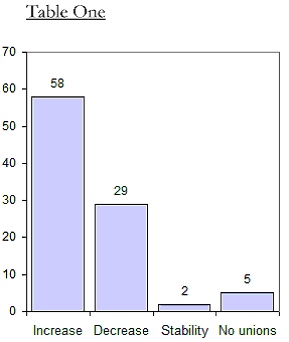
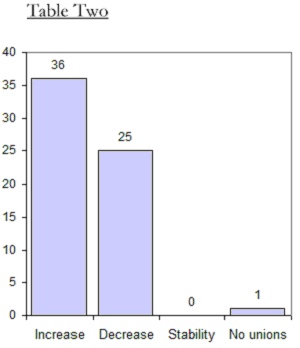
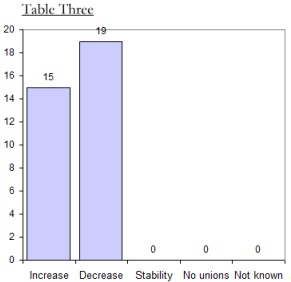
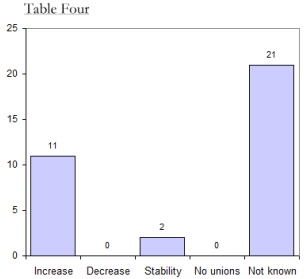
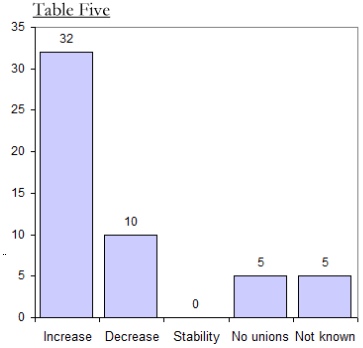



November 22, 2019 at 8:23 pm
Very good post. I absolutely love this site. Keep it up!
LikeLike
January 31, 2019 at 11:24 am
Thumbs up if you are watching this!
LikeLike
January 31, 2019 at 11:05 am
Truly thought out! YEW!
LikeLike
October 4, 2018 at 12:10 am
pheromones bees
The usual story begins sometime in the late
LikeLike
September 30, 2018 at 9:44 pm
where to buy small business ideas
The usual story begins sometime in the late
LikeLike
April 12, 2018 at 5:00 pm
Thanks on your marvelous posting! I certainly enjoyed reading it, you can be a great author.I will be sure to bookmark your
blog and will often come back at some point.
I want to encourage continue your great posts, have a nice afternoon!
LikeLike
January 13, 2018 at 2:17 pm
animals with pheromones
The usual story begins sometime in the late
LikeLike
November 29, 2017 at 8:03 pm
excellent points altogether, you simply received a brand new
reader. What may you recommend in regards to your
submit that you made some days ago? Any positive?
LikeLike
March 29, 2015 at 5:14 am
Reblogged this on As the Adjunctiverse Turns.
LikeLike